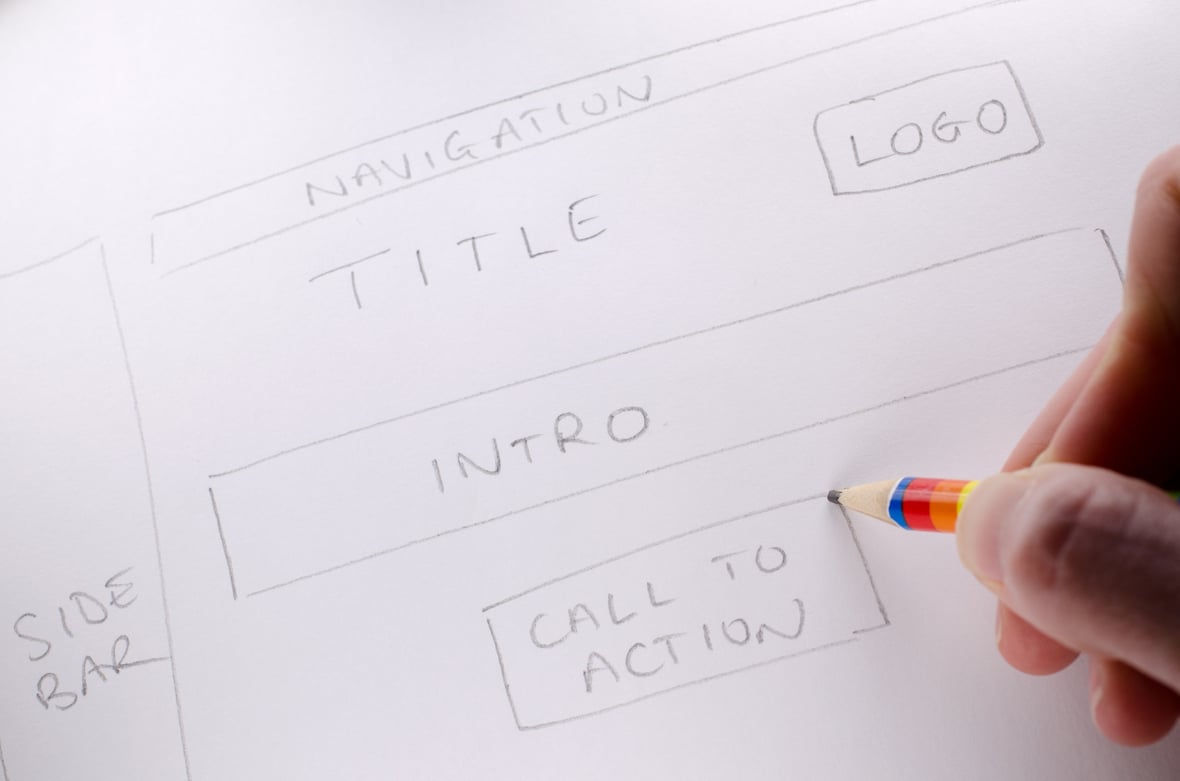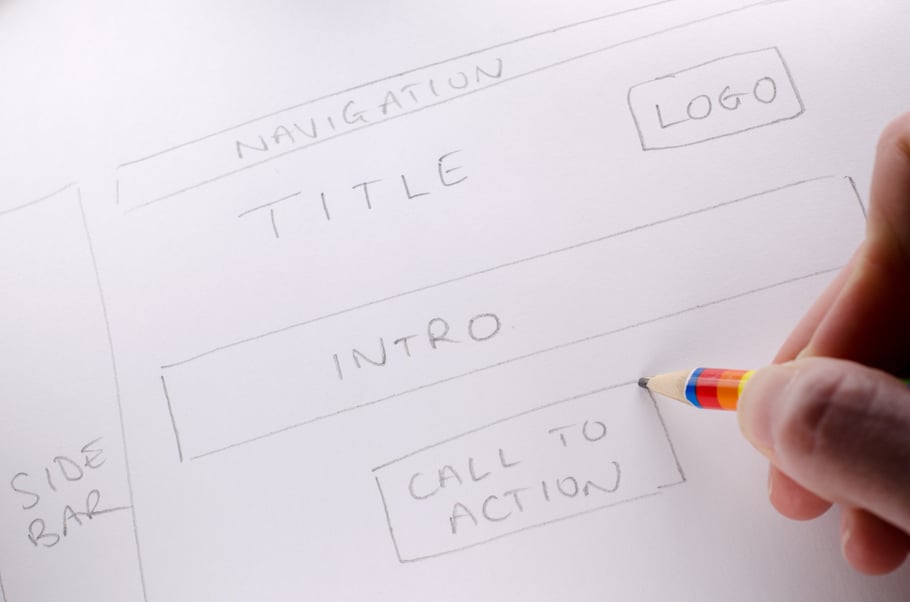
Who in Your Organization Should Be Involved in Your Next Website Redesign?
May 31, 2017
By Kyle James
 Redesigning a corporate website has become an item that most businesses feel is a necessary evil every few years. It sucks months away from the marketing team, and by the time it’s finally launched, it’s not uncommon for internal stakeholders to already be tired of looking at it.
Redesigning a corporate website has become an item that most businesses feel is a necessary evil every few years. It sucks months away from the marketing team, and by the time it’s finally launched, it’s not uncommon for internal stakeholders to already be tired of looking at it.
Many different internal stakeholders should be involved in a website redesign process, some more than others. At the end of the day, your website is one of the most visible parts of your company to outside audiences and, thus, is an incredibly important part of your business. Let’s talk about the most important individuals who should be involved in a website redesign and how they contribute.
Web Developer
"Web developer" is a rather generalized term in 2017. Is this person the designer and developer, or a developer who is customizing a template to match your brand? Is the developer part of your company or someone you have hired specifically for this project? Maybe it’s even an agency? No matter what, this is the person who is actually putting in the blood, sweat, and tears to bring the idea into reality. This person is the subject matter expert. They will work with you to make the rest of the team’s dreams come true here.
Designer
If a web developer is charged with turning a redesign concept into reality, a designer creates the look of that reality. From the page layouts, to the colors and fonts used, to images and CTAs, designers use their skills to make your website visually appealing to visitors. So many companies struggle because no matter how good their product or service is, potential customers are turned off by a homepage that looks dull, simplistic, or too 1990s Geocities. Quality designers ensure your webpages pass the blink test and catch readers’ attention long enough that they want to stay on the site.
UX Designer
Prospects interested in your product as a solution to their problems should want to explore your site and learn more. However, even the best-looking website can still drive off visitors if they can’t easily navigate from page to page to get the information they seek. UX designers conduct in-depth research to inform your website's architecture, sitemap and wireframes, and validate their findings through usability testing.
Marketers
The marketing team usually comprises the individuals driving the website redesign. Marketers have identified the personas and verticals that are being targeted. Marketers are also typically the owners of the content creation strategy of the website (e.g., blogs, whitepapers, e-books, webinars, and so on) and branding/messaging strategy. A big mistake is to assume that marketers are the ONLY people who should have any say in your new website. It should be part of their role to solicit feedback and advice from the rest of the departments on this list.
Sales
What are the questions that come up all the time in sales conversations? What are the pain points of prospective customers that lead them to talk to your company for help? Salespeople are going to know the answers to these questions better than anyone. They will also know how customers needs change over time. Salespeople are great to get more validation on your personas and make sure that you are appropriately targeting all the correct verticals/industries on your website. Needless to say, salespeople spend all day every day talking to prospects and clients, and because the goal of the website is to help your company sell more products or services, you definitely want to make sure that the redesign efforts are aligned with your sales team. It might not be as necessary to solicit sales feedback on the design, but the content is crucial to get their opinions on.
Copywriter
Web developers, designers, marketers, and salespeople may have a vision of the message you want a website redesign to convey, but they often aren’t the best people to turn that vision into actual words for visitors to read, understand, and be impressed by. This is where a copywriter often enters the process and creates the text that makes the reader want to learn more. Copywriting can be a bit of an art form—the best professionals combine simplicity, impact, and keyword-focused text to deliver a concise, powerful message. And don’t forget to enlist an editor or perhaps a second copywriter to look at copy before it goes live—misspelled display type will turn off visitors as quickly as a poor design.
Management/Leadership
Usually, leadership is given the authority of final sign-off or approval on things like a website redesign. Because of this single reason, it’s kind of unavoidable that leadership will be involved in a website redesign project. Some leadership teams will be much more hands-on and involved in this process than others, and it makes sense to discuss what that will entail early in the process.
Leadership teams own the mission, values, and core culture of the company. All of these things are important to consider in a website redesign. If you have a leadership team who isn’t deeply involved, you want to present the direction and why the new redesign will successfully meet these criteria. A successful person leading a website project will present the vision to leadership looking for approval of their direction and not permission.
Any Other Individuals Who Talk to Prospects/Customers
Basically anyone who talks to prospects or customers is full of invaluable information that could be on your website. Specifically, we are thinking about support, account managers, and customer service staff. Remember, your website is your storefront that is open 24/7/365, and the people who talk to customers are experts on the customer experience. Similar to the sales team, you want this feedback to focus more on the content and messaging side than the design and branding.
Takeaways
With all these different internal stakeholders, the most important challenge to avoid is death by committee. There should still be a single person who is driving this project and makes the final decision in what is and isn’t included. Although it’s important for a business website to serve many audiences, it will fail in effectiveness if it tries to serve all the audiences with equal importance. Identify that primary audience or persona early and make final decisions with this focus in mind.
Remember, getting an opinion from multiple parts of your company should be a useful and valuable insight into the final product and not something that harms and stalls the release. As a final takeaway, remember that all website visitors have a few things in common.
- They scan and don’t read online; their time is valuable.
- They don’t like cluttered websites.
- Organization and relevance matter.
- Finally, they don’t care what you do; they care about THEIR problem and whether you can fix it.
Good luck in your next redesign!

About the author
Kyle James started his path to becoming an Inbound Marketing Ninja back as a College Webmaster, yes back when that was a real job title. Kyle was one of the original Inbound Marketing Consultants at HubSpot and has been an advocate of Inbound Marketing ever since. Read more articles by Kyle James.








